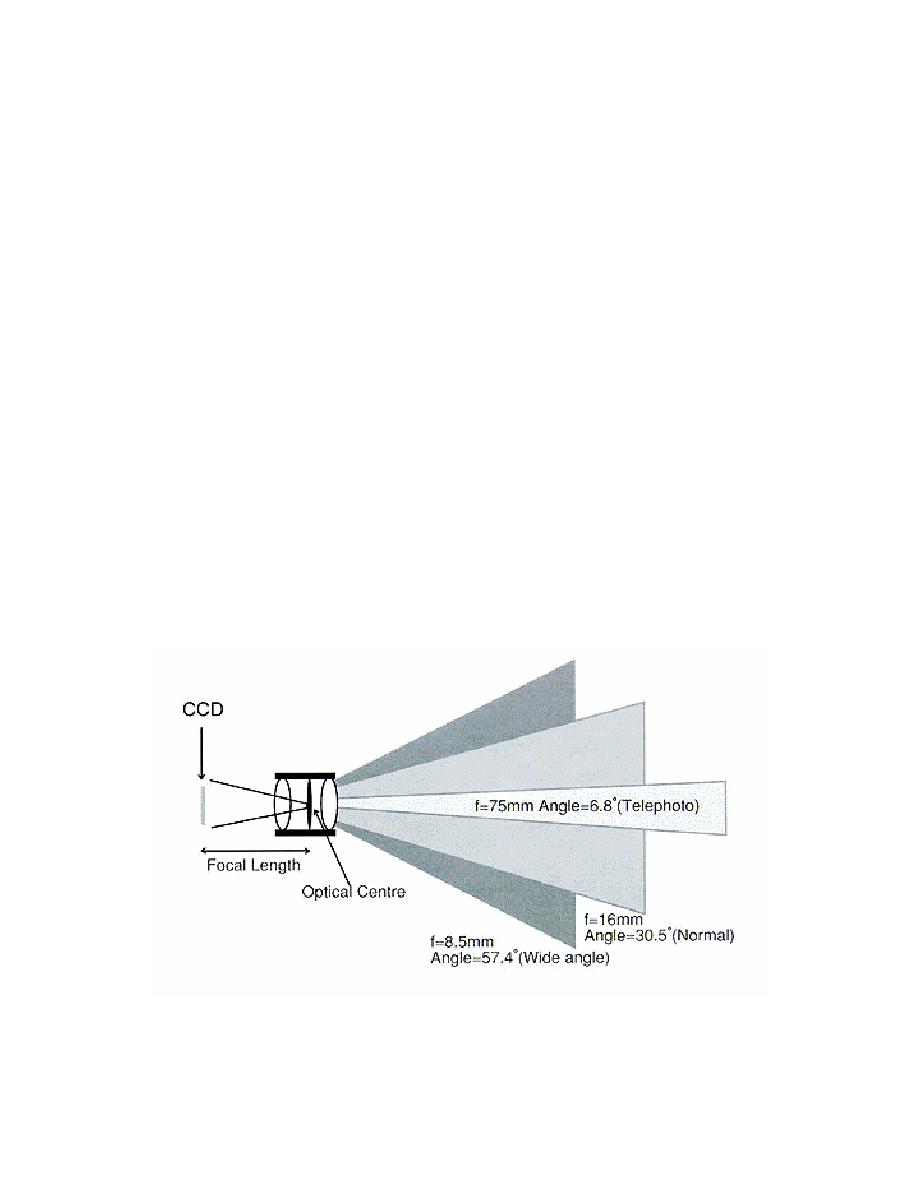
UFC 4-021-02NF
27 September 2006
change 1, 23 October 2006
4-12.3
For cameras used for classification of an intruder (the capability to classify an
intruder as human), the area of interest should occupy a minimum of 15 to 20 percent of
the field-of-view, with a maximum field-of-view of 200 feet in length or less. The lens
selection and alignment should be established so that the field-of-view should be no
more than 150 feet wide at the far end of the alarm sector to allow at least 4.5 pixels to
cover a 1-foot square target. That minimum resolution is needed to classify the intrusion
source as being a person versus an animal or debris. This likely requires that the
camera be mounted outside the zone being assessed.
4-12.4
For cameras used for identification of an intruder (the capability to determine
the identity of a human intruder), the area of interest should occupy a minimum of 25
percent of the field-of-view, with a maximum field-of-view of 75 feet in length or less.
4-12.5
Figure 4-10 compares the field-of-view of a telephoto lens with that of a
normal human eye and a wide-angle lens. For short focal lengths, a wide angle lens is
appropriate. It will, however, provide lower magnification. For long focal lengths, a
telephoto lens is appropriate. It will, however, provide a narrow field-of-view. Note that a
normal human eye sees at a 30.5 angle. In Figure 4-11, "CCD" refers to "charge-
coupled device," which is the main microelectronic chip that makes up the camera unit.
The charge-coupled device (CCD) is a sensor that collects light and turns it into an
electronic signal. Typical CCD sizes include 1/3-inch and -inch devices. The larger the
device, the more the area the sensor occupies and (typically) the greater the image
resolution.
Figure 4-10. Relative Magnification of an Object
63


 Previous Page
Previous Page
